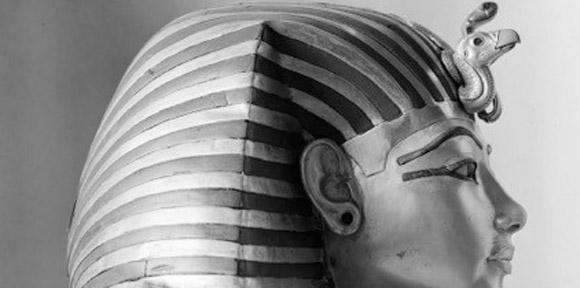
The exhibition Photographing Tutankhamun has been curated by University of East Anglia (UEA) Egyptologist Dr Christina Riggs and gives a different view on the ‘golden age’ of archaeology and photography in the Middle East.
The exhibition highlights the work of famous Egyptologist and archaeological photographer Harry Burton and the iconic images he captured during the lengthy excavation of the Pharoah’s tomb in Egypt’s Valley of the Kings. Dr Riggs is the first person to study the entire archive of excavation photographs, as well as the first to consider them from the viewpoint of photographic history in the Middle East.
She said: “The exhibition gives a fresh take on one of the most famous archaeology discoveries from the last 100 years. It questions the influence photography has on our perception and provides insight on the historical context of the discovery – a time when archaeology liked to present itself as a science that only Europeans and Americans could do.
“Through the eyes of the camera lens, the exhibition demonstrates the huge input from the Egyptian government and the hundreds of Egyptians working alongside the likes of Harry Burton and Howard Carter. This refreshing approach helps us understand what Tutankhamun meant to Egyptians in the 1920s – and poses the important question of what science looks like and who does it.”
As part of her project, Dr Riggs studied some 1,400 photographs by Burton in the Metropolitan Museum of Art, New York. Burton worked for the museum for most of his life, and his personal correspondence in their archives has offered important new insights into his work on the tomb of Tutankhamun – including some of the technical problems, personal tensions, and political issues behind the scenes.
Dr Chris Wingfield, Senior Curator (Archaeology) at MAA, said: "With strong collections of historic photographs documenting the history of archaeology and anthropology, we at MAA are excited about hosting an exhibition that explores the important ways in which photography contributed to – you could even say created – the field. We continue to train Egyptologists and archaeologists here in Cambridge, so this exhibition is an opportunity to think about how these disciplines were practised in the past, and to help shape their futures."
More than two dozen images have been created especially for the exhibition using digital scans from Burton’s original glass-plate negatives, including some never seen before. Also on display are newspaper and publicity materials from the 1920s and beyond, which show how the photographs were used in print. The scans have been made by The Griffith Institute at the University of Oxford, which is home to excavator Howard Carter’s own records of the excavation, including around 1,800 negatives and a set of photo albums.
The exhibition comes to Cambridge from The Collection in Lincoln, where it debuted in November 2017. It runs from June 14-September 23, 2018. Entry is free.
Iconic photography taken during the decade-long excavation of King Tutankhamun’s tomb has gone on display at Cambridge University’s Museum of Archaeology and Anthropology (MAA).

The text in this work is licensed under a Creative Commons Attribution 4.0 International License. Images, including our videos, are Copyright ©University of Cambridge and licensors/contributors as identified. All rights reserved. We make our image and video content available in a number of ways – as here, on our main website under its Terms and conditions, and on a range of channels including social media that permit your use and sharing of our content under their respective Terms.